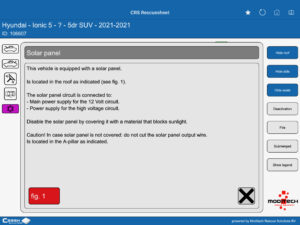- Latest news
- Database Update Crash Recovery System March 2025
- Online CRS Database: No more manual updates!
- Database Update Crash Recovery System February 2025
- Bliksund’s bold expansion
- Database Update Crash Recovery System January 2025
- Update in our Crash Recovery System
- Show or hide CRS buttons and categories
- Database Update Crash Recovery System December 2024
- Database Update Crash Recovery System November 2024
- Handle with Care: Navigating Complex Car Doors with CRS
- Latest news
- Database Update Crash Recovery System March 2025
- Online CRS Database: No more manual updates!
- Database Update Crash Recovery System February 2025
- Bliksund’s bold expansion
- Database Update Crash Recovery System January 2025
- Update in our Crash Recovery System
- Show or hide CRS buttons and categories
- Database Update Crash Recovery System December 2024
- Database Update Crash Recovery System November 2024
- Handle with Care: Navigating Complex Car Doors with CRS
Vehicle selection based on Solar Roof
Traffic and the transport network are changing considerably due to the advance of electric vehicles. These vehicles require a sustainable electricity source, such as, for example, the now familiar charging station. Less known, but certainly on the rise, is the Solar Roof, or in other words, solar panels integrated in the roof that charge the battery when the vehicle is being driven and when it is stationary.
Various manufacturers, research institutes and innovative parties have for a number of years been extensively testing solar cells and solar modules on vehicles. These are a solution for solar energy in traffic, not only for plug-in charging, but also even on the vehicle body itself. The solar panels capture the sunlight, which is then stored as electricity in the starter battery as well as in the high-voltage battery and provides for extra electric range. This should lead to lower costs for the user, fewer plug-ins at charging stations and reduced CO2 emissions.
In practice
The Toyota Prius Plug-in was the first passenger car in the world with a solar panel system that charges the car battery. After one day of charging in the sun, the solar panels can add approximately six kilometres extra range to the battery. After charging for 48 hours, the battery is fully charged and the car can be driven approximately 40–50 kilometres. Toyota is not the only brand that is working on solar panel roofs on cars. Tesla also has advanced plans to equip the next generation of cars with solar panels, but Hyundai is already ahead of Tesla. The South Koreans namely already offer the brand new IONIQ 5 (added to the CRS in the July update) with an option for a solar panel roof.
Solar panels are also used on a regular basis on campers, such as, for example, the Volkswagen Grand California campers that were added to the CRS in the August update.
Solar roof in the CRS
Vehicles with an (optional) solar panel roof have, of course, also been included in the Crash Recovery System. A user can now make a selection based on a panoramic roof as well as a solar panel roof. This extra option has been available since the last CRS update. After selecting the proper vehicle, the CRS Rescue Sheet is displayed and the first responder can find supporting information about deactivating the solar panel.
Crash Recovery System – Know what’s inside, see what to do!





